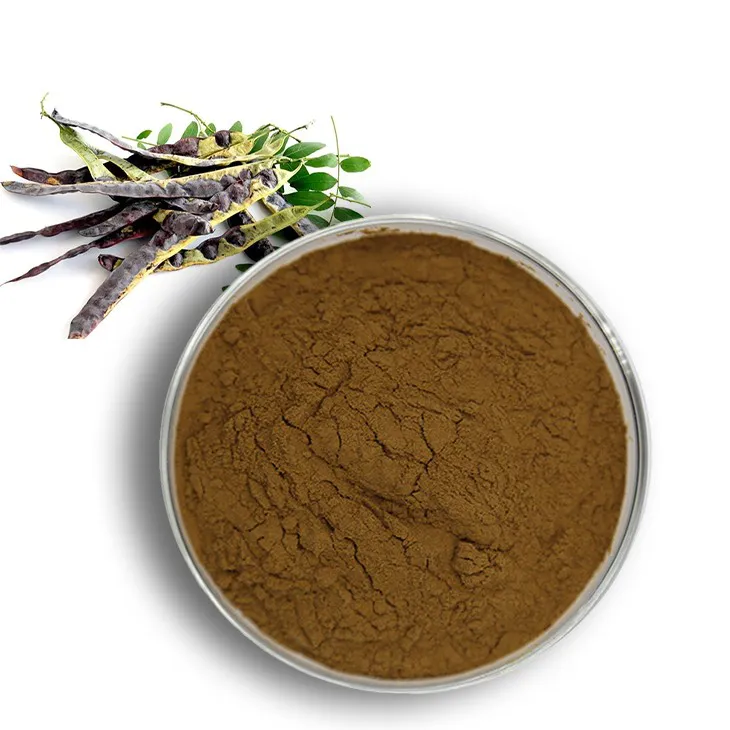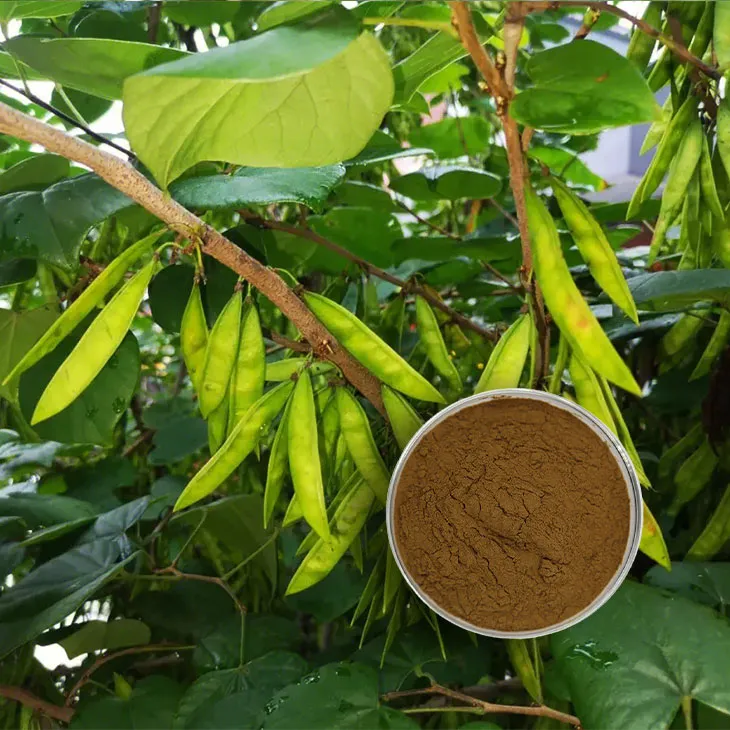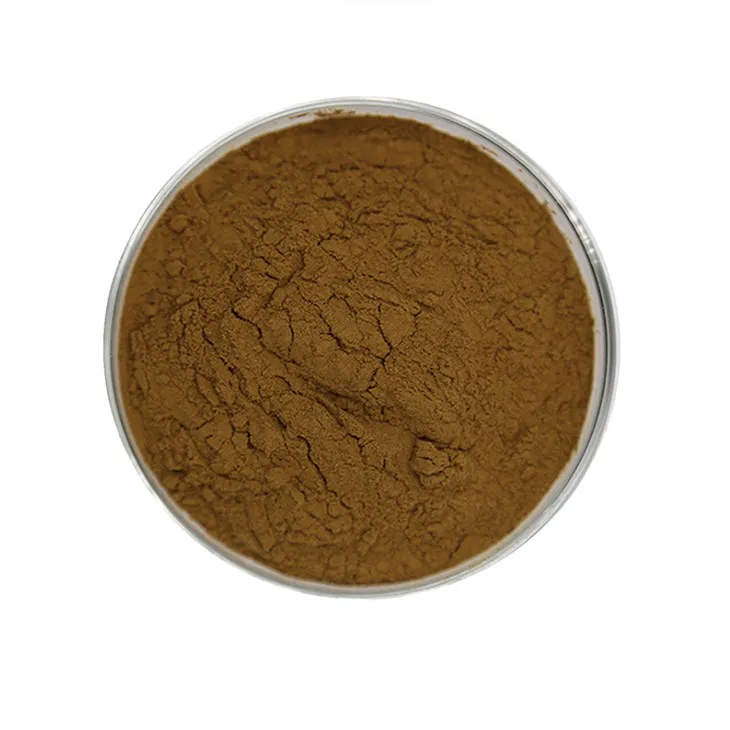- 0086-571-85302990
- sales@greenskybio.com
Saponin Extract: Nature's Best - Kept Secret
2024-11-14

Introduction
Saponin Extracts are a fascinating area of study that has been gradually gaining more attention in recent years. These natural compounds, known as saponins, are found in a wide variety of plants across the globe. For a long time, they have remained relatively overlooked, but their potential is now being recognized on multiple fronts.

Sources of Saponins
Saponins can be sourced from numerous plants. Ginseng is one of the most well - known sources. Ginseng has been used in traditional medicine for centuries, and its saponin content is believed to contribute to many of its purported health benefits. The saponins in ginseng are thought to play a role in enhancing energy, reducing stress, and improving cognitive function.
Another important source is yucca. Yucca plants are native to arid regions and have long been used by indigenous cultures. Yucca saponins have unique properties that make them useful in various applications. They are often studied for their potential in promoting healthy skin and hair, as well as for their anti - microbial properties.
Quinoa is also a rich source of saponins. While quinoa is mainly known as a superfood, its saponin content gives it some interesting characteristics. The saponins in quinoa are located on the outer layer of the seed. This layer needs to be removed before consumption in most cases, but the saponins themselves have potential uses in areas such as natural pesticides or in the development of new drugs.
Soapwort is a plant that has been used historically for its saponin - rich properties. It was used by early settlers as a natural soap substitute. The saponins in soapwort can create a lather, similar to soap, when mixed with water. This surfactant - like property is one of the hallmarks of saponins in general.

Chemical Structures of Saponins
Saponins have complex and unique chemical structures that are responsible for their many remarkable properties. They are composed of a steroid or triterpenoid aglycone (the non - sugar part) linked to one or more sugar moieties. This combination gives them a hydrophilic (water - loving) and hydrophobic (water - fearing) nature simultaneously.
The aglycone part of the saponin molecule can vary greatly depending on the plant source. For example, in ginseng, the aglycone may be a type of triterpenoid that has specific functional groups. These functional groups can interact with biological molecules in the body, which is thought to be related to the health benefits associated with ginseng.
The sugar moieties attached to the aglycone also play a crucial role. Different sugars can be attached, such as glucose, galactose, or rhamnose. The number and type of sugars can affect the solubility and biological activity of the saponin. For instance, saponins with more complex sugar chains may have different surfactant properties compared to those with simpler sugar attachments.

Surfactant - like Abilities
One of the most notable properties of saponins is their surfactant - like abilities. Similar to synthetic surfactants, saponins can reduce the surface tension between two substances, typically between a liquid and a solid or between two liquids.
When saponins are dissolved in water, they can form micelles. These micelles have a hydrophobic core and a hydrophilic outer layer. This structure allows them to interact with both water - soluble and water - insoluble substances. For example, in the case of soapwort, the saponins can surround dirt particles (which are often hydrophobic) and suspend them in water, making it easier to wash them away.
In industrial applications, saponin - based surfactants could potentially be used as an alternative to synthetic surfactants. Synthetic surfactants can have negative environmental impacts, while saponin - based surfactants are biodegradable and may be more environmentally friendly. However, there are still challenges in terms of large - scale production and cost - effectiveness.

Health Benefits
Saponin Extracts offer a range of potential health benefits. One of the significant benefits is their antioxidant properties. Antioxidants are important for protecting the body against oxidative stress, which is caused by free radicals. Free radicals can damage cells and are associated with various diseases, including cancer, heart disease, and neurodegenerative disorders.
Saponins act as antioxidants by scavenging free radicals. They can donate electrons to the free radicals, thereby neutralizing them and preventing them from causing further damage. Some studies have shown that saponin - rich plant extracts can increase the antioxidant capacity of the body when consumed regularly.
Another important health benefit is their anti - inflammatory effect. Inflammation is a natural response of the body to injury or infection, but chronic inflammation can lead to various health problems. Saponins can modulate the body's inflammatory response by interacting with the immune system.
For example, some saponins have been shown to inhibit the production of pro - inflammatory cytokines. These cytokines are signaling molecules that play a role in promoting inflammation. By reducing the production of these cytokines, saponins can help to reduce inflammation in the body.
Saponins may also have potential benefits for the cardiovascular system. Some research suggests that they can help to lower cholesterol levels. They may interfere with the absorption of cholesterol in the intestines or promote the excretion of cholesterol from the body.
Applications in Medicine
In the field of medicine, Saponin Extracts are being investigated for their potential in drug development. Their ability to interact with biological membranes makes them interesting candidates for drug delivery systems.
For example, saponin - based nanoparticles could be used to encapsulate drugs and target specific cells or tissues in the body. This targeted drug delivery can improve the efficacy of drugs and reduce side effects. Saponins can also enhance the solubility of poorly soluble drugs, making them more bioavailable.
Additionally, saponins may have direct pharmacological effects. Some saponins have been shown to have anti - cancer properties. They can induce apoptosis (programmed cell death) in cancer cells or inhibit the growth and spread of tumors. However, more research is needed to fully understand their mechanisms of action and to develop saponin - based cancer therapies.
Applications in Cosmetics
Saponin extracts also have significant applications in the cosmetics industry. Their surfactant - like properties make them useful in cleansers. They can effectively remove dirt, oil, and makeup from the skin without causing excessive dryness.
In hair care products, saponins can help to improve the condition of the hair. They can add shine, reduce frizz, and strengthen the hair shaft. Some saponin - rich plant extracts are also used for their potential anti - dandruff properties.
Moreover, saponins may have anti - aging effects in cosmetics. They can help to protect the skin from oxidative damage, which is one of the main causes of skin aging. By reducing oxidative stress, saponins can keep the skin looking youthful and healthy.
Challenges and Future Perspectives
Despite their great potential, there are several challenges associated with the use of saponin extracts. One of the main challenges is the extraction and purification process. Saponins are often present in plants in relatively low concentrations, and isolating them in a pure form can be difficult and costly.
Another challenge is standardization. Different plant sources may contain different types and amounts of saponins, which can make it difficult to ensure consistent quality in products. There is a need for better methods of standardization to ensure the safety and efficacy of saponin - based products.
In the future, more research is needed to fully explore the potential of saponin extracts. This includes further studies on their biological activities, as well as the development of more efficient extraction and purification methods. With continued research, saponin extracts could become an important part of various industries, from medicine to cosmetics and beyond.
FAQ:
What are saponin extracts?
Saponin extracts are substances derived from plants. Saponins are natural compounds that can be found in various plants such as ginseng and yucca. They have unique chemical structures which endow them with certain properties.
What are the sources of saponin extracts?
The sources of saponin extracts are diverse plants. Some well - known sources include ginseng, which is widely recognized for its potential health benefits, and yucca. However, saponins can be found in many other plant species as well.
What are the unique properties of saponin extracts?
Saponin extracts have surfactant - like abilities. This means they can interact with surfaces in a way similar to detergents. They also have potential health benefits, for example, antioxidant and anti - inflammatory effects. These properties are related to their unique chemical structures.
How are saponin extracts important in medicine?
In medicine, saponin extracts may play important roles due to their antioxidant and anti - inflammatory effects. These effects can help in treating various diseases or conditions. For example, the antioxidant effect can protect cells from damage, and the anti - inflammatory effect can reduce inflammation in the body.
How are saponin extracts used in cosmetics?
In cosmetics, saponin extracts can be used because of their surfactant - like properties. This can help in formulating products that can clean or interact with the skin or hair in a beneficial way. They may also contribute to other properties of cosmetics, such as providing antioxidant protection for the skin.
Related literature
- Saponins: Chemistry, Properties, and Applications in Health and Cosmetics"
- "The World of Saponin - Rich Plants: A Comprehensive Review"
- "Saponin Extracts: Unraveling Their Mysterious Health - Promoting Effects"
- ▶ Hesperidin
- ▶ citrus bioflavonoids
- ▶ plant extract
- ▶ lycopene
- ▶ Diosmin
- ▶ Grape seed extract
- ▶ Sea buckthorn Juice Powder
- ▶ Beetroot powder
- ▶ Hops Extract
- ▶ Artichoke Extract
- ▶ Reishi mushroom extract
- ▶ Astaxanthin
- ▶ Green Tea Extract
- ▶ Curcumin Extract
- ▶ Horse Chestnut Extract
- ▶ Other Problems
- ▶ Boswellia Serrata Extract
- ▶ Resveratrol Extract
- ▶ Marigold Extract
- ▶ Grape Leaf Extract
- ▶ blog3
-
High purity olive leaf extract
2024-11-14
-
Lavender oil extraction method
2024-11-14
-
100% organic virgin sea buckthorn fruit oil
2024-11-14
-
Lotus leaf extract powder factory in China
2024-11-14
-
China aged garlic extract supplier
2024-11-14
-
Deer antler extract powder manufacturer
2024-11-14
-
Saw palmetto extract vs whole herb
2024-11-14
-
Hawthorn powder
2024-11-14
-
Yohimbine Bark Extract
2024-11-14
-
Tongkat Ali Extract
2024-11-14
-
Nettle leaf extract
2024-11-14
-
Honeysuckle Pollen
2024-11-14
-
Thunder God Vine Extract
2024-11-14
-
Natural grape seed extract
2024-11-14
-
Elderberry Extract
2024-11-14
-
Baicalin
2024-11-14
-
Garcinia Cambogia Extract
2024-11-14





















